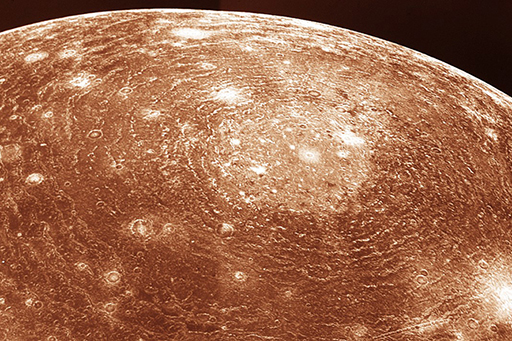3.3 Why some craters are big
So, how do scientists work out the size of the crater that a particular impact would form or, conversely, the properties of an impact that would have caused a crater of a particular size? Well, now that the process is understood, it is possible to calculate the relationships. The calculations can be tested against small-scale laboratory experiments and in rare cases if the actual crater is eventually imaged.
The size of a crater is controlled by various factors, some related to the impactor and others related to the target surface. The more energy delivered by the impactor, the bigger the crater. The easier it is to break apart and disperse the material from which the target surface is made, the bigger the crater. In the case of Valhalla, shown in Figuren 37, Callisto’s crust was too weak to support the crater that formed in the centre, which has sagged to flatness and is now marked by a pale blotch surrounded by concentric rings.

The energy of the impactor depends on its mass (and therefore on both its size and its density) and on the speed at which it strikes the surface.
The ease with which the target surface breaks up depends on its density and on whether the surface is a solid layer or consists of fragmental material. The ease with which the target material is dispersed depends on the strength of the surface gravity of the target body.
